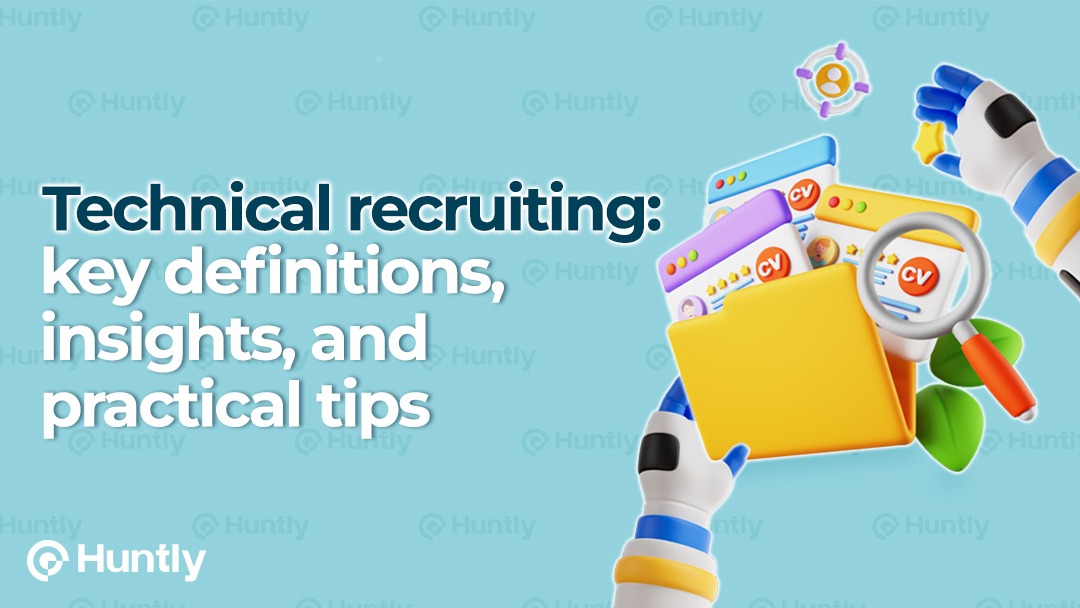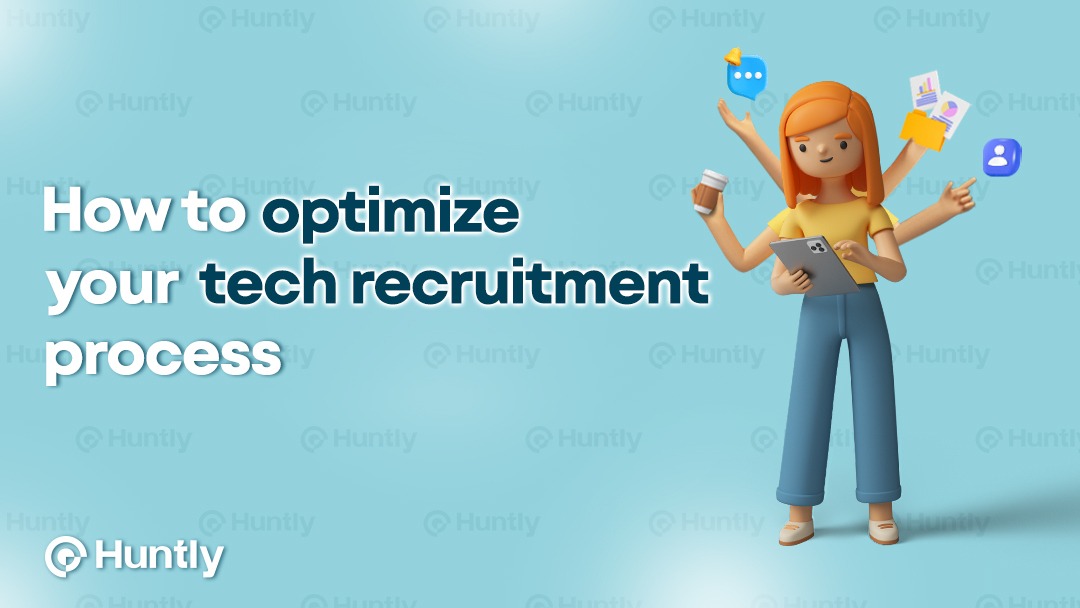The Meaning of Cost-Per-Hire
The cost per hire (CPH) is the total amount of expenses involved in bringing a new employee on board, from recruiting and hiring to onboarding. These expenses can be divided into the following categories:
- Recruitment costs are the money you pay for recruitment services, such as salaries and bonuses for your internal recruiters, recruitment agency fees, or referral bonuses for internal/external candidate recommendations.
- Software expenses are the subscription fees for the tools you use when finding developers. These can include paying for applicant tracking systems, premium LinkedIn accounts, job boards, Google ads, and coding assessment platforms you may use during interviews, etc.
- Hardware costs. Once a new employee joins your company, they'll need laptops, headphones, and other equipment they need for productive work ‒ a separate group of expenses.
- Onboarding costs are measured as the time mentors and team leads spend on a new hire, multiplied by their hourly rate. The same goes for hiring managers and other team members who take part in the interview process.
How to Measure Cost-Per-Hire
So how do you calculate cost per hire? To comprehend this figure, you first have to divide total hiring costs by the number of hires in a given period.

Let’s see how you can find out the cost per hire in the following example. Let’s assume that you run a startup (5-10 employees). Your company is located in San Francisco, California, and you are looking for .NET and Angular local developers. You have a recruiter on your team who hired these specialists in 3 months. To calculate the cost per hire, you first need to know the total expenses including the following:
| Recruitment costs (for 3 months) | |
| Internal recruiter’s salary | $13,600 |
| Software expenses (for 3 months) | |
| Job advertising (LinkedIn, job boards, etc.) | $1,500 |
| ATS | $300 |
| Hardware expenses | |
| Laptop | $3,000 x 2 |
| Headphones | $600 x 2 |
| Accessories | $400 x 2 |
| Hiring and onboarding costs | |
| Hiring managers’ time spent on interviews | $2,800 |
| Team lead’s time spent on onboarding | $1,500 |
| TOTAL RECRUITMENT COSTS | |
| $27,700 | |
| COST PER HIRE | |
| $13,850 | |
With the total hiring costs of $27,700 divided by two closed positions, the cost per hire in this example is $13,850. Now that you know how to measure cost per hire, let’s peruse the industry standards.
Average Cost-Per-Hire by Development Position
According to the SHRM report, average hiring costs per employee in the IT industry can reach up to $30,210. This number varies dramatically, depending on several factors such as hiring location, the developer’s seniority level, their tech stack, and recruitment methods used to hire IT specialist. Consequently, every development position also has its unique CPH.
While the cost per hire is calculated AFTER the hire is done, employers want to know this number (at least an approximate one) BEFORE starting the process to hire IT experts. That’s why we created a recruiting cost per hire calculator that allows you to define recruitment expenses for hiring a particular tech specialist. Here’s an example of recruiting costs by tech position (of the middle seniority level) in the western USA region. This example also allows you to compare hiring prices on Huntly and in traditional recruitment agencies.
| Development position | Huntly fee | Recruitment agency fee |
| Front-end developer | $6,100 | $42,700 |
| Back-end developer | $8,000 | $56,000 |
| Full-stack developer | $8,600 | $60,200 |
| Database engineer | $8,000 | $56,000 |
| DevOps engineer | $8,300 | $58,100 |
| CloudOps engineer | $12,500 | $87,500 |
| Blockchain engineer | $9,800 | $68,600 |
| Data engineer | $8,400 | $58,800 |
| ML & AI engineer | $9,860 | $69,020 |
| Cybersecurity engineer | $7,800 | $54,600 |
| Embedded software engineer | $8,900 | $62,300 |
| Software tester | $6,500 | $45,500 |
| Mobile developer | $8,500 | $59,500 |
| BizDev manager | $8,400 | $58,800 |
| Product designer | $8,000 | $56,000 |
Why is Measuring and Reducing Cost-Per-Hire so Important?
We’d all agree that it’s important to calculate cost per hire, but you should also clearly understand why you need to know this figure. Of course, the first advantage that comes to mind when talking about measuring business expenses is saving money. However, CPH calculations can provide much more benefits than just financial ones.
Get insights on recruitment efficiency
There is a healthy recruiting costs per hire range for each industry, and if your CPH falls within this range, it means that you meet industry standards. If it’s higher than the market average, you should think about how to optimize your recruitment process. If it’s lower (and the quality of your hire doesn’t suffer), it means that you’re doing great. This way, when you calculate cost per hire and track it, you also estimate your recruitment efficiency.
Plan wisely
By knowing the cost of hiring a developer, you also plan your recruitment KPIs with more precision. You might plan the number of specialists to hire in a particular period of time or set your budget according to hiring goals.
Optimize your budget
When reducing costs per hire, you can both optimize your recruitment process and balance your budget. If you manage to spend less when hiring developers, you could use saved money for other critical tasks.
Discover the best companies that provide EOR services in Ukraine, including your devs' payroll and benefits.
How to Reduce Costs of Hiring Developers?
Hiring top tech talent cheaper than the industry average is not just possible, but highly practical. Here are some tips I would recommend for taking advantage of this.

Define job requirements
The clearer the job requirements you have, the more relevant candidates you can expect. Make sure to describe your vacancy in as much detail as possible to sort out applicants whose tech stack, skills, expertise, salary expectations, and other critical characteristics don’t match your requirements. You'll save the time of your recruiters significantly, thus cutting costs.
Advertise your vacancies on targeted online resources
When looking for software developers, you should avoid general job boards since:
- Your job posting can get lost among thousands of other ads.
- You can hardly expect to get a big number of qualified developers on such resources.
Consequently, you should focus on targeted platforms like Git, or Stack Overflow.
Streamline the hiring process
While specialized IT platforms provide you with a great number of developers, your recruitment process may still lack effectiveness. One of the reasons for this is that applicants aren’t reviewed in any way. This means that you have to spend your time (or the time of your recruiters) checking each CV before you find relevant candidates who you want to proceed with.
At Huntly, we understand that you might not always have the time and resources to verify each CV manually, so we do this for you! Once you post a job description on our tech hiring platform, our global IT recruitment community starts referring tech candidates from their network. Then, our AI-powered technology parses all the uploaded CVs to filter out the ones with the wrong technologies, experiences, and locations. Finally, our personal internal team of recruiters pre-screens every resume, so you review only the best relevant candidates.
So, by posting your vacancy on Huntly, you streamline your recruitment process from the very beginning. You also reduce cost per hire as we only charge 5-7% of a specialist’s annual salary.

Leverage automation and AI
Tech recruitment is a very resource-consuming process, so it should be optimized as much as possible to bring the most effective results. 62% of IT recruiters who have already tested different AI tools say that they are great time savers when it comes to routine tasks such as writing job descriptions or CV pre-screening. However, AI in recruitment has the potential to do more than that: it can become your assistant during video interviews, provide feedback to candidates, and save your valuable time for other interesting and fulfilling tasks.
Take advantage of talent networks
More than 80% of US companies leverage referrals as the way to hire new employees. It’s no surprise though, taking into account the fact that referrals provide additional social proof as well as are a cost-effective solution to meet recruitment needs. We created Huntly with this thought in mind, too. We believe in the power of network and community, and our clients have already had successful cases when hiring with Huntly’s referral approach.
Track and analyze recruitment metrics
The more you know about your cost per hire, the more informed decisions you can make about its optimization. So, if you aren’t doing this yet, start tracking your CPH over different periods of time, compare the results, identify patterns, and think about how you can optimize your processes in order to reduce the cost per hire. One of the first steps to reduce it is to use alternative recruitment methods like Huntly.
To summarize, by choosing Huntly as your tech recruitment solution, you cut down your hiring expenses by two to three times if compared to agency services. You also get a high-quality candidate pipeline, 98% of whom pass a probation period successfully. Moreover, it’s risk-free to get started: you pay nothing for job posting, only after a successful hire!



















